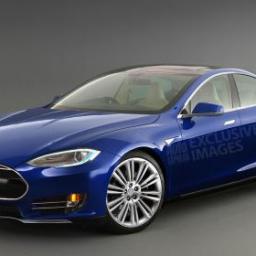 The Internet of Things, whatever that means, is coming, and our networks are not prepared for it
The Internet of Things, whatever that means, is coming, and our networks are not prepared for it.
Cisco estimates, for example, that by 2018 the typical new car will have no less than four machine-to-machine connections. That single statistic alone introduces more than 60 million new connections every year, and that's just for automobiles.
No one really knows how the Internet of Things will play out. There will certainly be a lot of trial and error. But if it takes off the way top industry experts are anticipating, the Internet of Things (including wearable computing and the industrial Internet) will force a re-evaluation of the network infrastructures in place, otherwise those networks run the risk of getting hopelessly clogged.
Where do potential network bottlenecks lurk?
More on the subject at RCRWireless.

Peter Cohan
has five reasons you should dump your Cisco stock, if your portfolio includes any. His first reason is that Cisco appears to have lost its ability to keep up with a marketplace of quickly changing technology. In the last three years, Cisco has announced 21,000 firings - 11,000 in 2011; 4,000 a year ago, and now,
a restructuring that will mean 6,000 more job cuts. It was announced on August 13. 6000 jobs are equivalent to 7% of its 74,000 person workforce.
From Reuters:
"The market doesn't wait for anyone. We are going to lead it, period," Chief Executive Officer John Chambers told analysts on a conference call. "The ability to do that requires some tough decisions. We will manage our costs aggressively and drive efficiencies."
Chambers partly blamed the cuts on the uncertainty in global demand. In emerging markets, where the company faces sluggish sales and increased competition, Cisco saw continued challenges. China product orders fell 23 percent, and Brazil had 13 percent declines.
Getting ready to purchase a laptop before classes start - for yourself or your kid? Considering a chromebook instead of a regular laptop?
Over at ZDNet, Steven J. Vaughan-Nichols (SJVN) reviews six of the top Chromebooks and provides a couple of recommendations.
Chromebooks are increasingly well-suited to the classroom, with little maintenance or management overhead, a low cost, and much of what the typical user needs. In fact, now that Microsoft Office is an online web service, you can even access them from a Chromebook! This post was submitted using a Chromebook I intended to reformat and use with a Linux distro but haven't needed to re-image. If you can stomach being harnessed to Google's software ecosystem and services, there are lots of good reasons to check out Chromebooks, and the low price is just one of them. Over to SJVN with the rest.
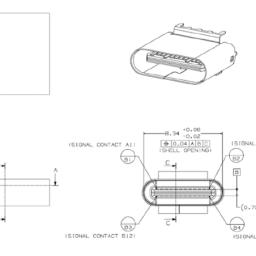
The newest specification for the
USB 3.1 Type-C connector is now finalized, finally bringing
improvements found in other cables (such as Apple's Lightning cable) to the USB standard.
- Reversible plug orientation
- Small size (~8.4 mm x ~2.6 mm)
- Able to supply up 100 watts of power
- USB 3.1 data rates (10 Gbps)
- Durability of 10,000 connect-disconnect cycles
- Improved EMI and RFI mitigation features
Although I know some people will undoubtedly whine about yet another USB connector, these changes are long overdue and very welcome in my opinion. Previous USB connectors have ranged from problematic (Mini-B) to unwieldy (USB 3.0 Micro-B) and badly needed replacement.
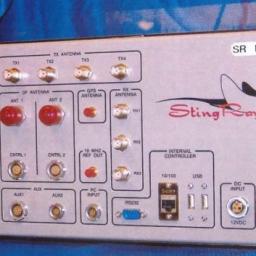
Are you the proud owner of a snazzy, new smartphone? Thrilled with the convenience and utility of having this clever device in your pocket, connecting you to friends, colleagues, and information? Guess who else is excited about your purchase? Law enforcement.
Meet the Stingray, essentially a honey pot, fake cell tower. Your phone connects to it, and you're done.A stingray is a false cell phone tower that can force phones in a geographical area to connect to it. Once these devices connect, the stingray can be used to either hone in on the target's location or, with some models, actually eavesdrop on conversations, text messages, and web browser activity. It's not clear how much the police cooperate with the cell phone carriers on this - in at least some cases, the police have gone to carriers with requests for information, while in others they seem to have taken a brute-force approach, dumping the data of every single user on a given tower and then sorting it to find the parties they're interested in tracking. Stingrays can be used to force the phone to give up its user details, making it fairly easy for the police to match devices and account holders.
[Ed. note: Time to give up your cellphone and go back to using public phone booths? Oh, wait "]
Interesting things brewing over at Google, where two recent patents show a push to operationalize
new technology that lets you unlock a device using a retinal scan.
The process has three steps:
Receiving light on an iris of an eye
Detecting, at one or more light sensors disposed on or within a transparent lens covering at least a portion of the eye, light reflected from the light incident on the iris of the eye, wherein the light reflected comprises image data indicative of a pattern associated with the iris.
Outputting an iris fingerprint based in part on the image data
A related patent looks at an encoded contact lens and its application. Perhaps the days of Google Glass will be numbered, as the fashion-conscious will quickly move right to the next, obvious step.
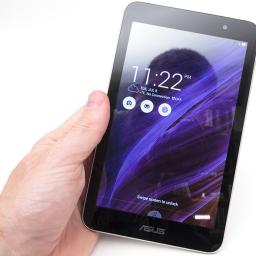
Have you seen ASUS's new
$150 x86 tablet and thought to yourself: how can it possibly be so cheap?
Well here's your answer. It just may be because Intel is
paying manufacturers to use its chips. That's bad news for Intel. Turns out, because Intel's Bay Trail Atom processors don't have as much functionality integrated onto the chip as the more common ARM SOCs (system on a chip), it creates a higher "bill of materials" for tablet makers. Cash-rich Intel is covering the difference in cost by simply reimbursing the manufacturers for the extra components needed. That might be a stop-gap measure to ensure Intel stays "in the game" where tablets manufacturers are concerned, but a long range strategy it is not.
In the meantime, this is a good time to scoop up a cheapo tablet!
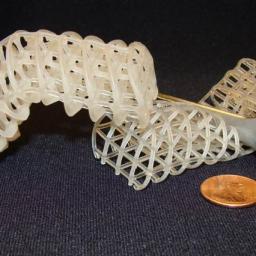
A
phase-changing material could be used in low-cost robots to allow them to switch between hard and soft states. The material is made from a flexible open-cell foam coated in wax that can achieve significant ranges of stiffness, strength, and volume [
Abstract].
The material - developed by Anette Hosoi, a professor of mechanical engineering and applied mathematics at MIT, and her former graduate student Nadia Cheng, alongside researchers at the Max Planck Institute for Dynamics and Self-Organization and Stony Brook University - could be used to build deformable surgical robots. The robots could move through the body to reach a particular point without damaging any of the organs or vessels along the way.
Robots built from the material, which is described in a new paper in the journal Macromolecular Materials and Engineering, could also be used in search-and-rescue operations to squeeze through rubble looking for survivors, Hosoi says.
To build a material capable of shifting between squishy and rigid states, the researchers coated a foam structure in wax. They chose foam because it can be squeezed into a small fraction of its normal size, but once released will bounce back to its original shape.
The wax coating, meanwhile, can change from a hard outer shell to a soft, pliable surface with moderate heating. This could be done by running a wire along each of the coated foam struts and then applying a current to heat up and melt the surrounding wax. Turning off the current again would allow the material to cool down and return to its rigid state.
In addition to switching the material to its soft state, heating the wax in this way would also repair any damage sustained, Hosoi says. "This material is self-healing," she says. "So if you push it too far and fracture the coating, you can heat it and then cool it, and the structure returns to its original configuration."
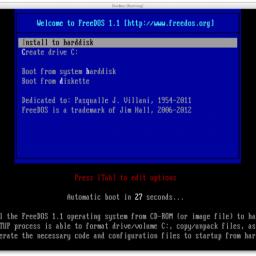
Who cares that it's 20 years old:
FreeDOS is still around, fulfilling an interesting and valuable role in the world of tech, and what's more, is ardently supported and appreciated by a loyal core of users and developers. Sean Gallagher over at Ars Technica interviews the FreeDOS lead developer, Jim Hall, to find out why FreeDOS still fills a niche:
Because FreeDOS is, as some have called it, "barely an operating system," it allows developers to get very, very close to the hardware. Most modern operating systems have been built specifically to avoid this for security and stability reasons. But FreeDOS has become much more friendly to virtualization and hardware emulation-it's even the heart of the DOSEMU emulator
The direction the project has taken hasn't exactly followed the road map Hall envisioned after version 1.0. He once had ambitious plans for a next-generation of DOS, originally envisioning a modern FreeDOS along the lines of an alternative history of computing. "For a while, I was thinking, 'If MS DOS survived, where would DOS have gone in the last 10 to 15 years?'" Hall said. "I was advocating some sort of multitasking-we could have task switching like what was supported in the 286, where you can put one process to sleep while you do another process. I wanted to have TCP/IP added to kernel."
FreeDOS might hail from the era before networking but it's inherently real-time, provides a great teaching tool that allows you to get close to the bare metal, and remains deliciously uncomplicated.
That's also the opinion of Gallagher, who spent a whole day {gasp!} running DOS just to remember what it's like. Now get offa my lawn.
 The Internet of Things, whatever that means, is coming, and our networks are not prepared for it.
The Internet of Things, whatever that means, is coming, and our networks are not prepared for it.



